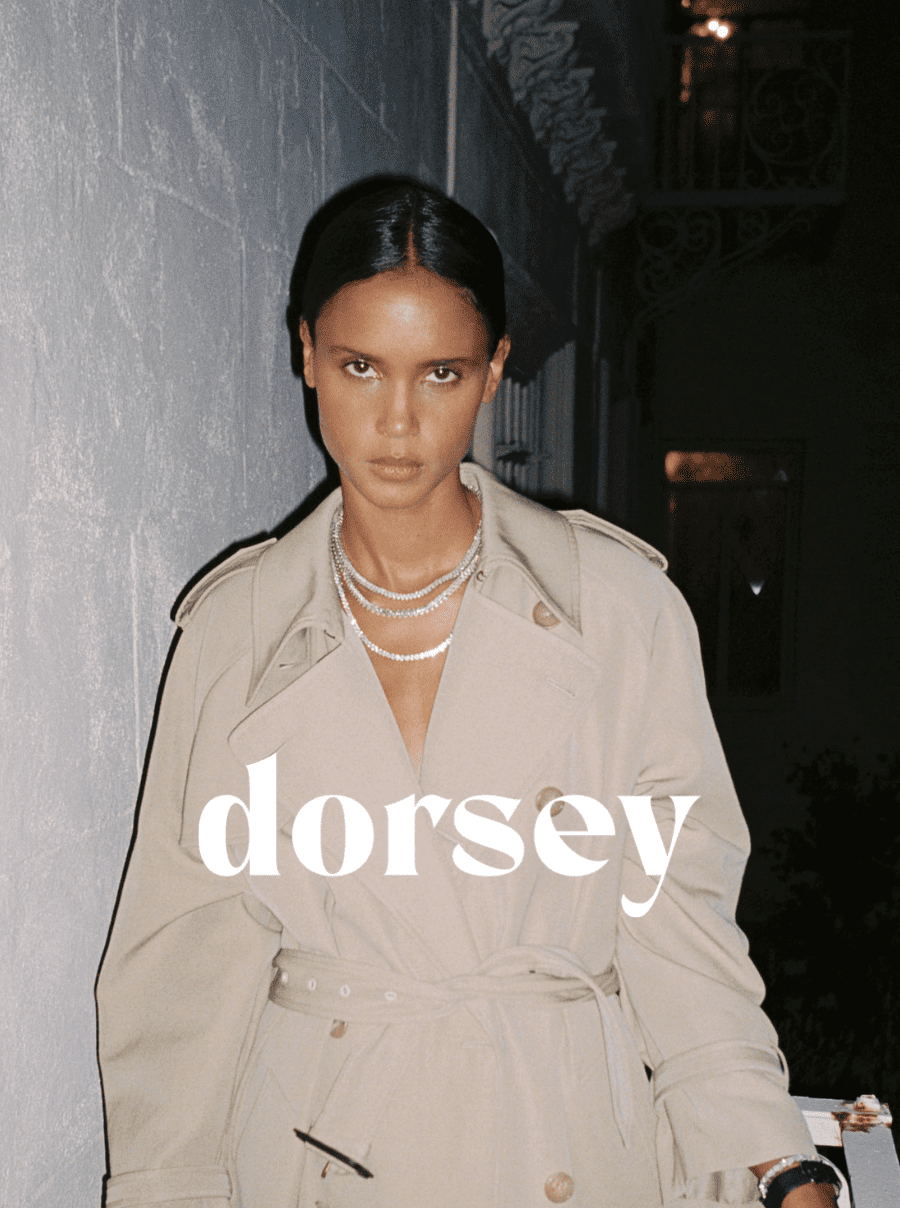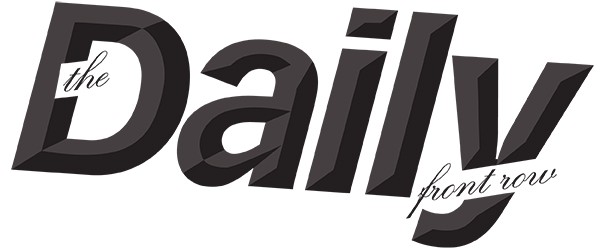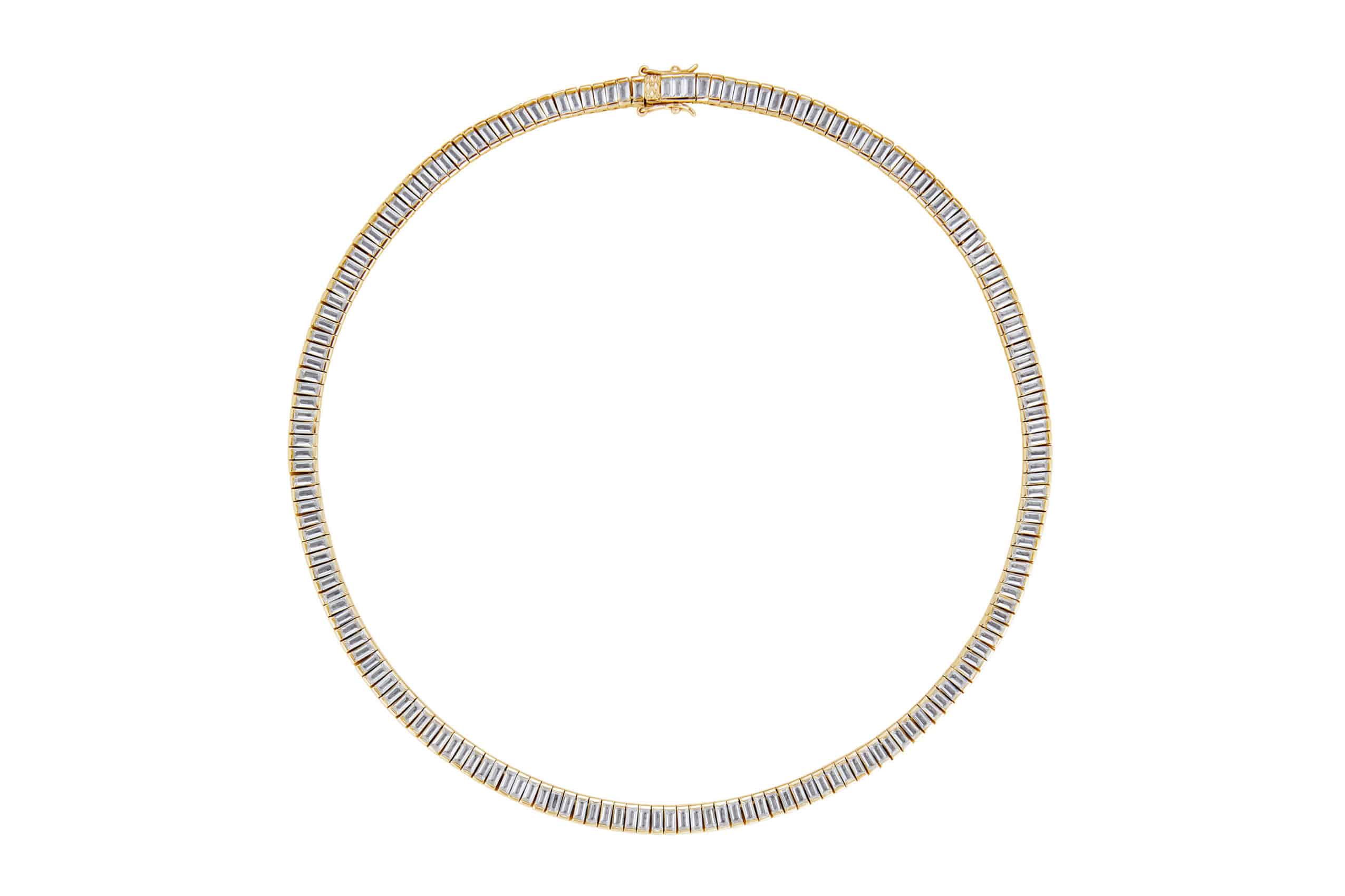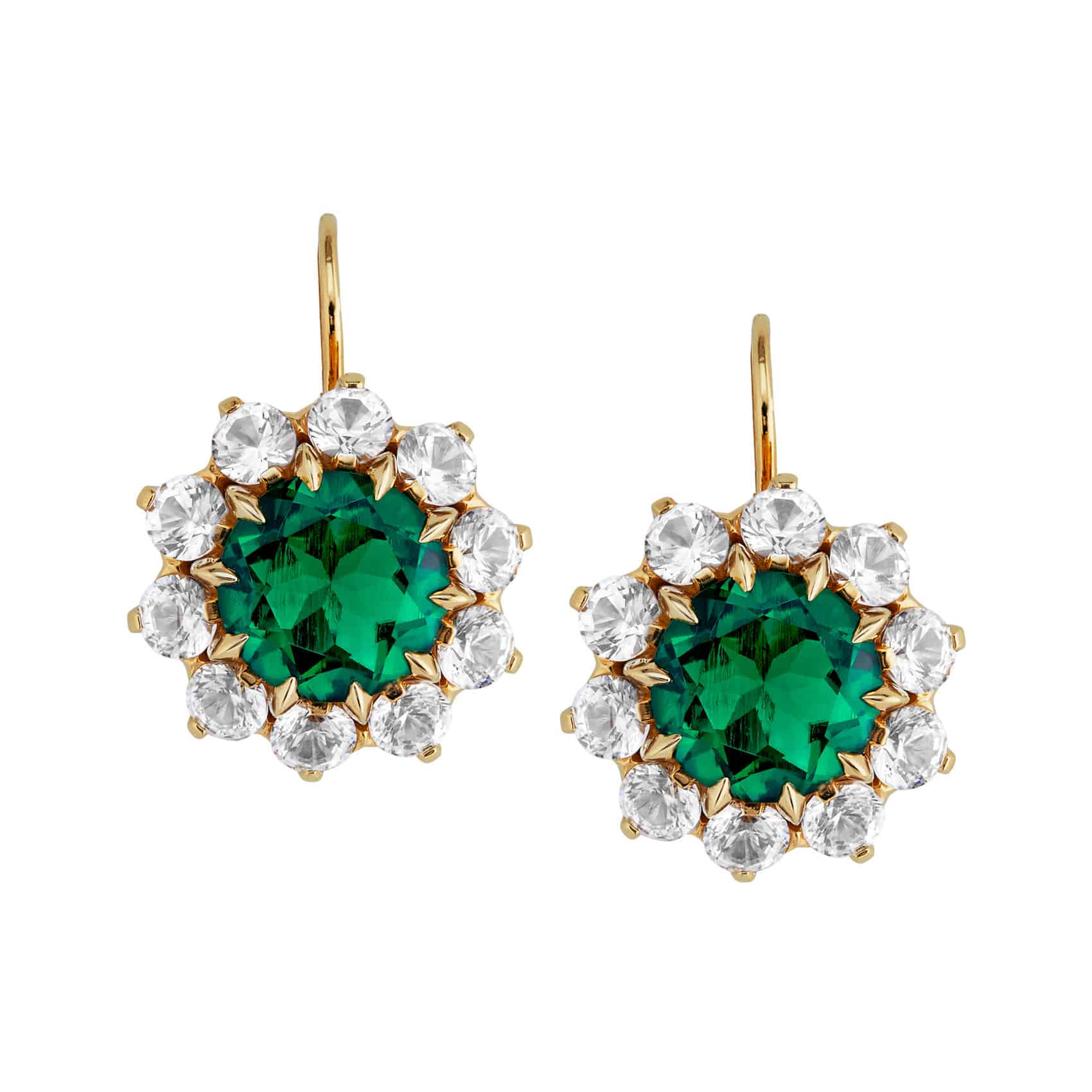It’s time you get to know Meg Strachan, who might be a first-time founder, but her impeccable taste and creative intuition has long been leading some of your favorite brands to become what they are now. Keen to put her own stamp on something, the fashion industry veteran dreamt up Dorsey after noticing the lack of elegant—yet still a little bad ass—diamond pieces that didn’t cost you your annual salary. The result is an offering of necklaces, earrings, and bracelets (psssst: more is coming v. soon!) with lab-grown gemstones and diamonds that have won over A listers and everyone else in between. Sure, they might might be inspired by heirlooms, but thanks to Strachan’s on-point direction, there’s nothing stuffy here in the slightest. After hearing how she built the business to seven-figures by herself, we had a zillion questions for her. Let’s get into it!
I know the name is close to your heart! Tell us about ‘Dorsey’ and why it was the right fit for the brand.
It’s very close to my heart—my company is named after my grandmother, Dorsey, whose style perspective was based around jewelry. Dorsey taught me everything there was to know about jewelry; about clasps, settings, stones, and style. She was a collector of era-based costume and fine jewelry, and her jewelry defined her style. It wasn’t an add on, but truly the focus of how she put herself together. I idolized how she presented her own quiet strength and womanhood while wearing an old black blazer and a rivière necklace. She really didn’t give a damn what anyone thought of her and she enjoyed her life. I hope the Dorsey brand can inspire other women, the same way my grandmother inspired me through jewelry.
You’ve worked at incredible brands like Anine Bing, Goop, Girlfriend Collective, and Bandier, but tell us about how you got your start. What did you study and what’s always been your area of focus?
I started in the buying world during my early twenties, but I pretty quickly transitioned to the intersection of marketing and e-commerce where I’ve led growth marketing teams in executive roles for quite a few direct to consumer companies. I’m in my 18th year working in fashion. I have always been fascinated by how fashion companies sell products and I have a deep love for street style in the raw form it used to exist (…not so long ago!) I had the pleasure of leading many creative teams in my career, but I was always executing someone else’s vision to a large extent. Dorsey is the first time that I’ve been able to take all of my pent up creative ideas and bring them to life in a very specific way, where every detail of the creative direction is coming from me, and not a founder whose vision I’m trying to execute, which was [the way for] a large part of my career. My team and I have carved our own path and our own brand identity. I’ve always known exactly how I wanted to bring Dorsey to life through our creative.

(Ashley Barrett)
What’s something you saw each of the brands you helped to grow perfect in their brand identity that you’re now applying to Dorsey?
What I’ve learned from working within so many different direct to consumer brands is that it’s important to put your blinders on and look away from what other companies are doing. I’ve recently drastically reduced the amount of time I spend on Instagram because it doesn’t feel helpful to consume so much, so often, with little ability to edit the constant feed of stuff coming at me. I think that as a brand, storytelling is the single most important thing that you need to do well. How you tell stories is what sets one company apart from another. Great brand storytelling is in the microscopic details. When it’s done well, a brand can’t replicate a competing company.
Take us back to when you launched in 2019. What was the white space you saw?
For the last 90 years, the jewelry business hasn’t changed very much. On one hand, consumers have had access to cz jewelry [editor’s note: cubic zirconia, cz, are manmade minerals intended to look like real diamonds] and on the other they could purchase incredibly expensive mined diamonds. As a consumer in my mid-thirties, with no previous experience in manufacturing jewelry, I didn’t have any interest in mined diamond mall brands and I was searching for product that was meticulously made, yet affordable. I couldn’t afford a $50,000 necklace and I didn’t want the quality of cz. It was around this time that I noticed that only bridal companies who made rings were using lab grown stones. Lab grown diamonds have the same molecular makeup as mined diamonds, but quality and affordability makes them infinitely more desirable to consumers like me, who are looking for beautiful jewelry. Diamond necklaces and bracelets are two of the most polarizing pieces of jewelry (and they were really once reserved for wealthy women at country clubs and royalty). With so many companies entering the lab grown bridal world, I wondered why I couldn’t find lab grown options for classic tennis bracelets or rivière necklaces.
- Petit Marguerite Rivière, Silver
- Petit Bessette, Gold
- Olympia Gold
- Halston Silver
- Petit Theodora, Bracelet Silver
- Emerald Gwen, Gold
Editor’s note: the Spring collection is now live on Dorsey.com
What were the early days like?
When I started Dorsey, a lot of people in the jewelry industry didn’t understand what I was trying to create. Fast forward to last year, we sold over a million lab grown stones. Not a single one of them was in a ring. I saw a billion dollar opening for a lab grown gemstone and diamond business that had nothing to do with getting married.
Love it! What goes into each Dorsey piece? What do you want your prospective customers to know and feel good about when purchasing a piece?
Our pieces are made in some of the most pristine fine jewelry factories in the world. We’re a product lead brand, meaning that the quality, weight, and clarity of our lab grown stones are the focus of our company.
Your fan base is super impressive…how helpful has it been to helping grow the brand?
Thank you so much! I started Dorsey while I was the vice president of marketing for Girlfriend Collective and I bootstrapped the business to seven figures before I could hire any employees or PR. I am really thankful for all of the stylists and celebrities who have been buying from the company since we first started—when I was packing orders in my garage. Our celebrity following has been really helpful because people stop and pay attention to lab grown rivière necklaces when they’re worn by people like Justin Bieber (who has access to wear anything). I am really thankful to Karla Welch, Justin’s stylist, for being such a huge supporter of Dorsey since very early on in.
Who are some stars you’d love to see in Dorsey?
I would love to see Michelle Yeoh in Dorsey!
We loved when the NYT called your tennis bracelet ‘Phoebe Philo-esque unfussy luxury’—what are some other words or moods you use to describe Dorsey pieces?
As someone who has been waiting for Phoebe’s new collection for the past few years, I really did die when I saw that, and I really (really) appreciated “unfussy luxury” as it’s exactly how I have always wanted the brand to present. I’m so close to Dorsey that I don’t know what people think of it and how they see us.

Bella Hadid in Dorsey’s Lee earrings at the 2022 Met Gala (Getty Images)
You’ve great personal style too—what are your most worn garments?
Thank you so much. I’m really a jeans and an oversized anything over them kind of person. I have a young daughter so everything I wear has to work at preschool drop-off and the office. I’m a little more practical post pandemic, I think. I wear a lot of low-top sneakers and I’m partial to a wide leg trouser. I really stick to a handful of classic, practical pieces and stack a lot of Dorsey jewelry to dress up.
View this post on Instagram
What do you hope 2023 and beyond brings for Dorsey?
As a woman who founded a company in the middle of the pandemic, I’ve really learned to take things as they come, and enjoy the ride.
Subscribe to our newsletter and follow us on Facebook and Instagram to stay up to date on all the latest fashion news and juicy industry gossip.







